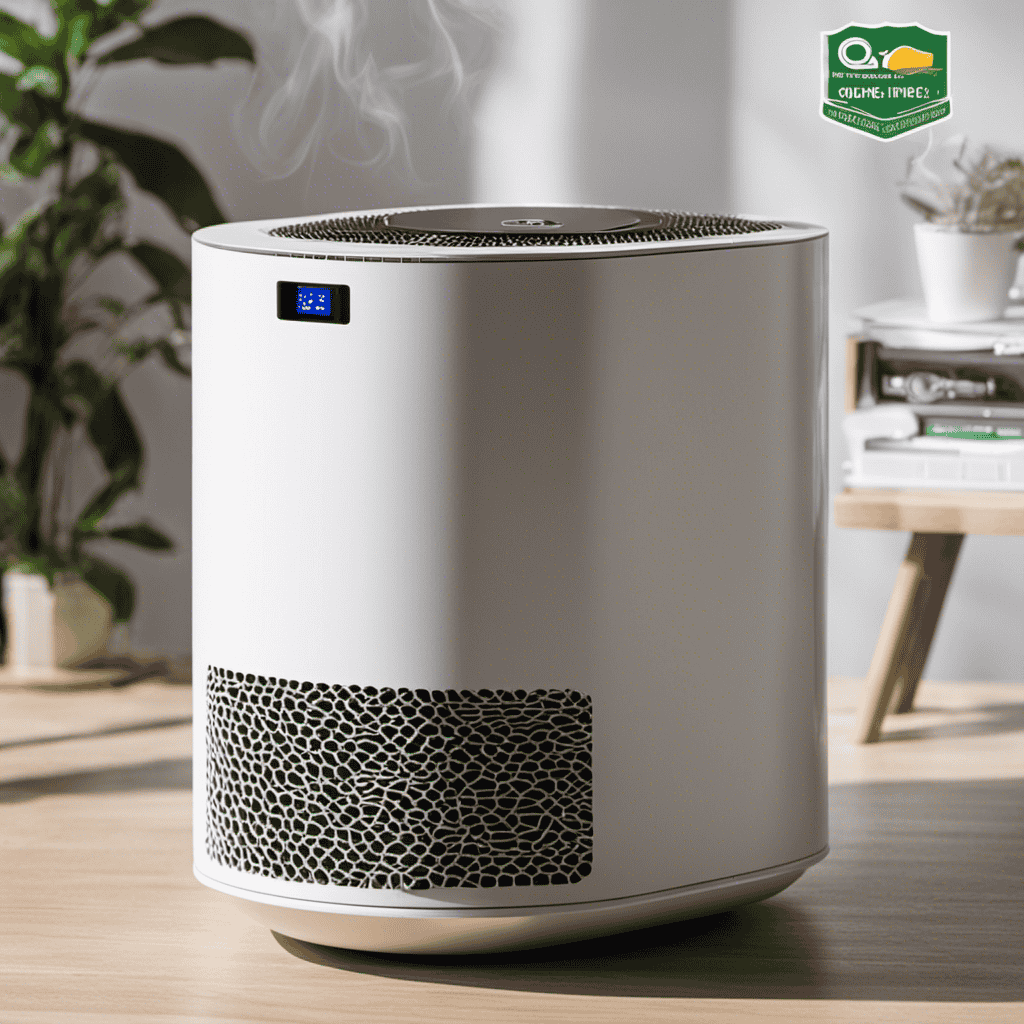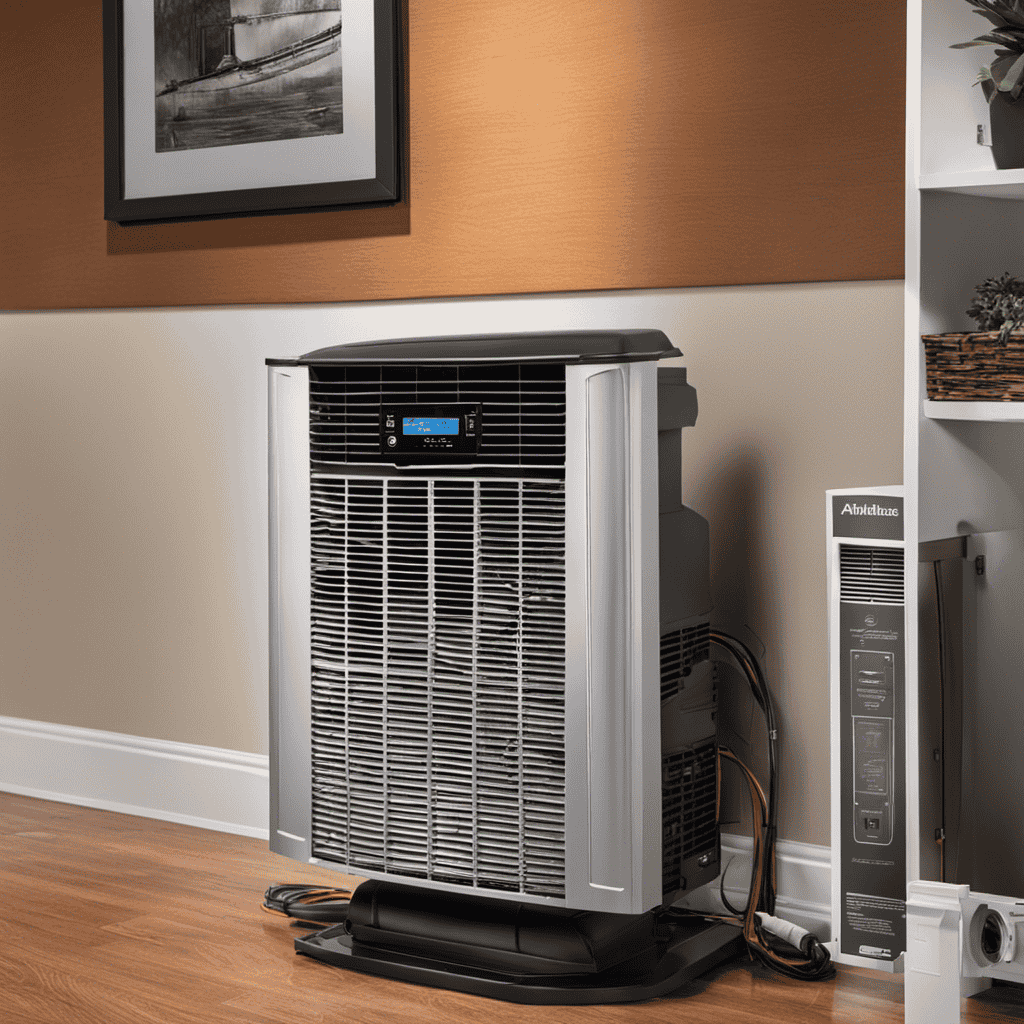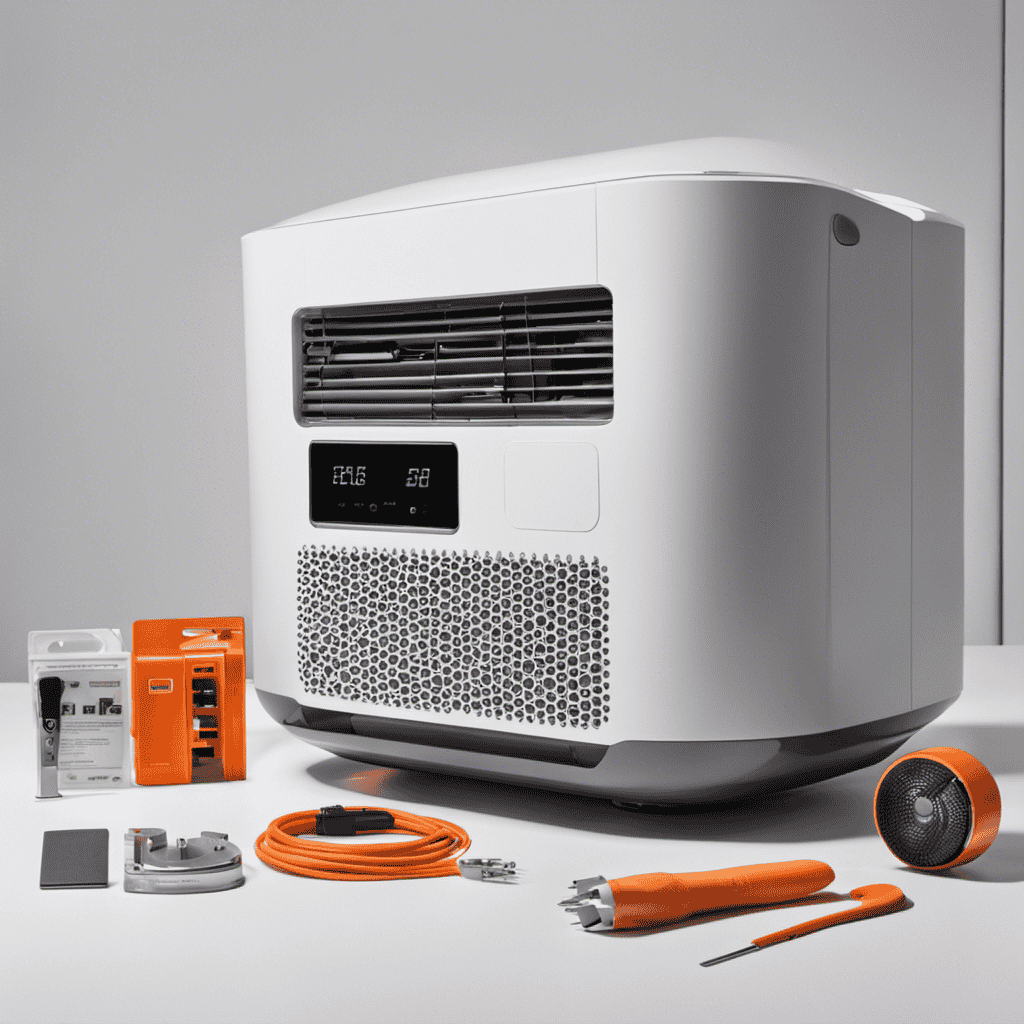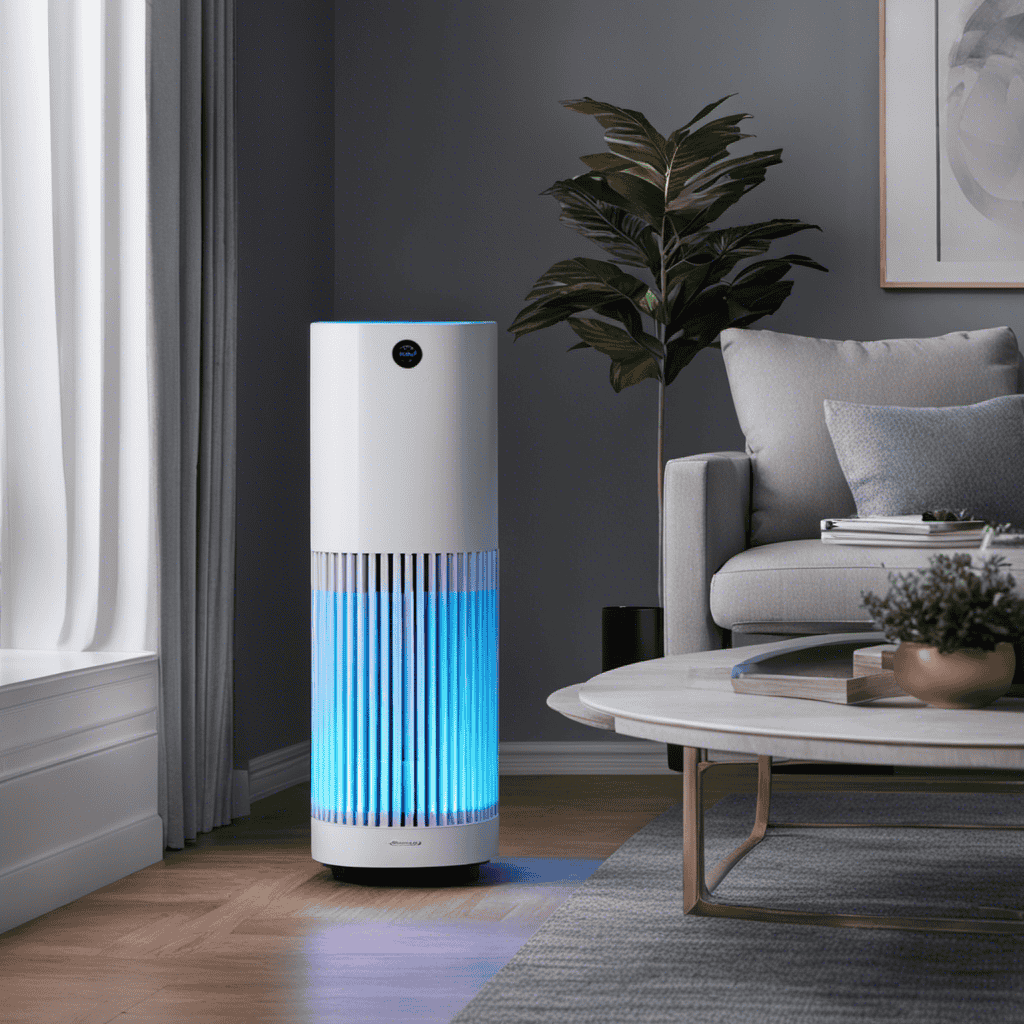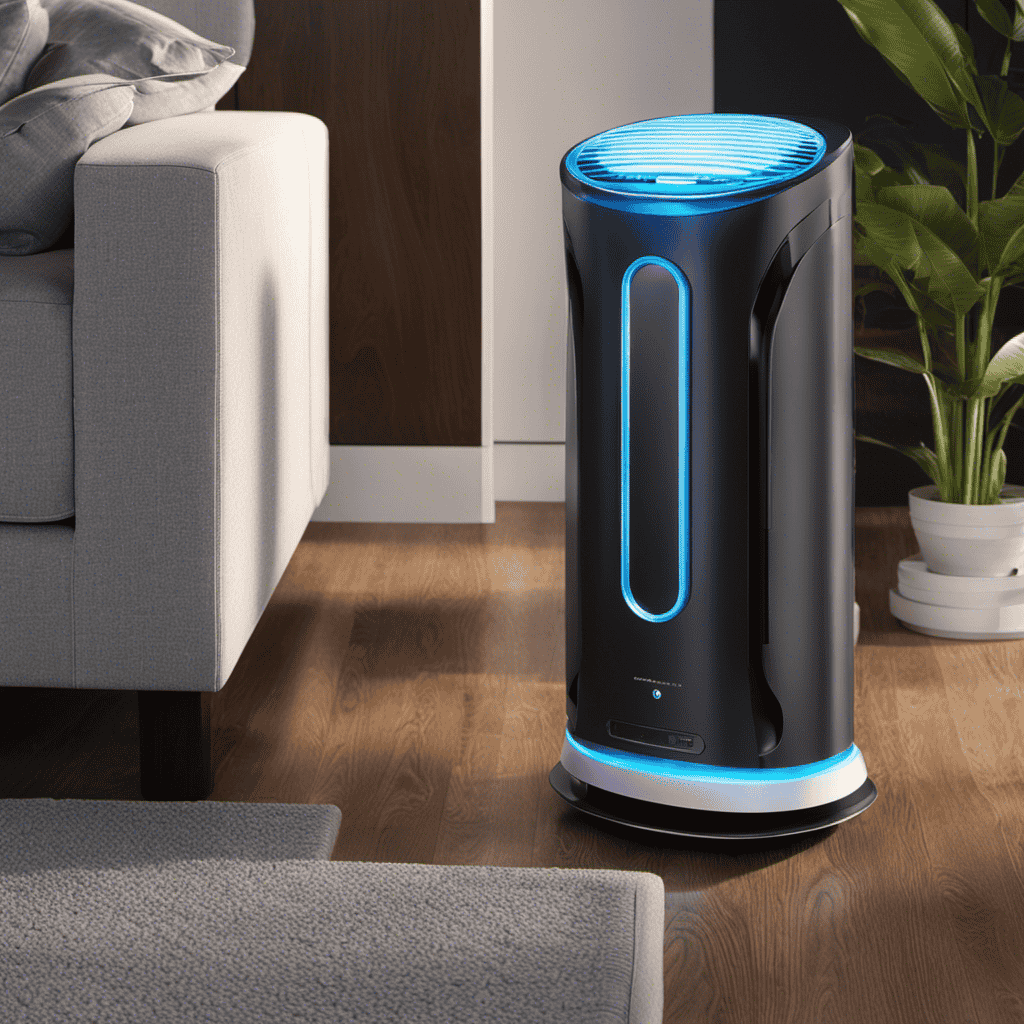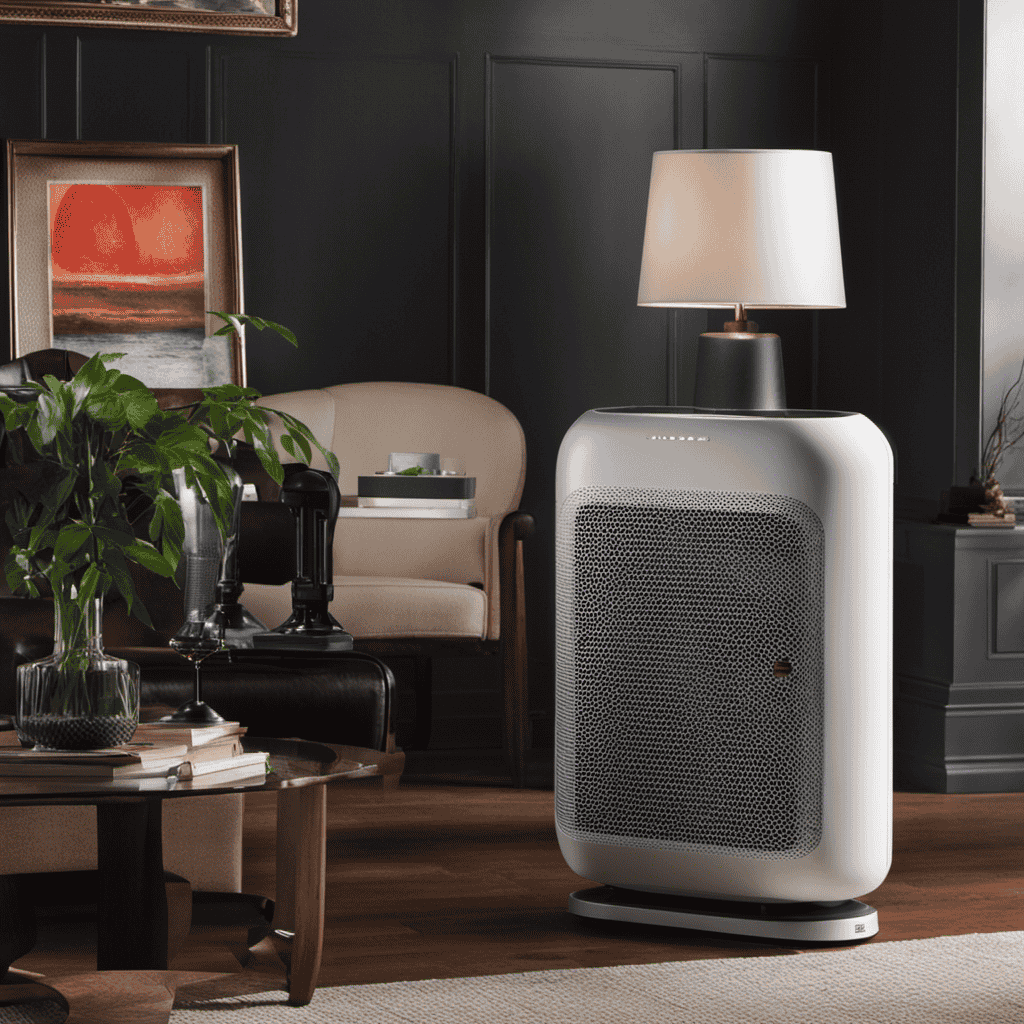Are you fed up with the persistent smoke odor in your house and searching for a remedy? Well, search no more! This article will guide you through creating your own smoke air purifier.
With just a few simple steps and some readily available components, you’ll be breathing fresh, clean air in no time. Say goodbye to smoky odors and hello to a healthier home environment.
Let’s get started!
Key Takeaways
- Smoke pollution can have serious health risks, and an air purifier can help filter out smoke particles and other pollutants, promoting a healthier home environment.
- When selecting components for a DIY air purifier, consider factors like cost, effectiveness, and compatibility. HEPA filters are moderately priced, highly effective, and compatible with most purifiers.
- Regular maintenance and care, such as cleaning or replacing filters every 3-6 months, can maximize the effectiveness of a homemade air purifier for smoke.
- While air purifiers can reduce the odor of smoke, they might not completely eliminate it. Realistic expectations are important when using an air purifier for smoke.
Understanding the Need for an Air Purifier for Smoke
If you’re dealing with smoke pollution, you’ll want to understand the need for an air purifier.
Smoke pollution can pose serious health risks, as it contains harmful particles and chemicals that can irritate the respiratory system and lead to respiratory diseases.
Indoor air pollution can be even worse than outdoor pollution, as it can get trapped and accumulate in enclosed spaces.
An air purifier is designed to filter out these pollutants and provide clean indoor air.
It works by drawing in the air and passing it through filters that trap and remove smoke particles, allergens, and other pollutants.
Choosing the Right Components for Your DIY Air Purifier
When choosing the right components for your DIY air purifier, it’s important to consider factors like cost, effectiveness, and compatibility. By selecting cost-effective alternatives, you can save money while still achieving cleaner air. Additionally, considering the environmental impact of your choices is crucial for sustainable living. To help you make an informed decision, I have provided a table below that compares different components based on cost, effectiveness, and compatibility.
| Components | Cost | Effectiveness | Compatibility |
|---|---|---|---|
| HEPA filters | Moderate | High | Most purifiers |
| Activated carbon | Low | Moderate | Most purifiers |
| Ionizers | Low | Low | Most purifiers |
Step-by-Step Guide to Assembling Your Smoke Air Purifier
To start assembling your DIY smoke air purifier, gather all the necessary components and refer to the step-by-step guide provided below.
Using an air purifier for smoke can have numerous benefits. Firstly, it can effectively remove harmful particles and chemicals present in the air, improving the overall air quality. Secondly, it can help eliminate odors and reduce the risk of respiratory issues caused by smoke inhalation.
However, there are some common misconceptions about air purifiers for smoke. One of them is that they can completely eliminate the smell of smoke. While air purifiers can reduce the odor, they might not completely eliminate it.
Another misconception is that air purifiers can remove all the toxic chemicals and pollutants from smoke. While they can reduce the levels of these contaminants, they might not be able to remove all of them. Therefore, it is important to have realistic expectations when using an air purifier for smoke.
Tips and Tricks for Maximizing the Effectiveness of Your Homemade Air Purifier
One way to enhance the efficiency of your DIY smoke air purifier is by regularly cleaning or replacing the filters. Here are some tips to help you get the most out of your homemade air purifier:
-
Clean or replace filters every 3-6 months: Over time, filters can become clogged with smoke particles, reducing their effectiveness. Regular maintenance ensures optimal performance.
-
Use high-quality filters: Investing in filters with a high MERV (Minimum Efficiency Reporting Value) rating can significantly improve air purification. Look for filters specifically designed to capture smoke particles.
-
Position the purifier strategically: Place your DIY air purifier in an area where smoke concentration is highest, such as near windows or doors. This will maximize its efficiency in removing smoke from the air.
Maintenance and Care for Your DIY Smoke Air Purifier
Regularly cleaning or replacing the filters in your homemade air purifier helps to maintain its efficiency in removing smoke particles from the air. To ensure that your DIY smoke air purifier continues to work effectively, follow these cleaning instructions and troubleshooting guide:
| Cleaning Instructions | Troubleshooting Guide |
|---|---|
| 1. Turn off the purifier and unplug it from the power source. | 1. Check if the purifier is plugged in properly and the power source is working. |
| 2. Remove the filters from the purifier. | 2. Ensure that the filters are installed correctly and securely. |
| 3. Gently vacuum the filters to remove dust and debris. | 3. If the purifier is not working, check if the filters are clogged and need replacement. |
| 4. If the filters are heavily soiled, wash them with mild soap and water. | 4. Clean the exterior of the purifier regularly to prevent dust buildup. |
| 5. Allow the filters to dry completely before reinstalling them. | 5. If the purifier emits a strange odor, consider replacing the filters. |
| 6. Reinstall the filters back into the purifier. | 6. Contact the manufacturer or consult the user manual for further troubleshooting steps. |
| 7. Plug in the purifier and turn it on. | |
| 8. Check the purifier’s performance to ensure it is removing smoke particles effectively. |
Frequently Asked Questions
Can I Use My Homemade Air Purifier for Smoke to Remove Other Types of Odors, Such as Cooking Smells or Pet Odors?
Yes, homemade air purifiers for smoke can be effective in eliminating other odors like cooking smells or pet odors. However, it’s important to consider the safety and effectiveness of leaving them running constantly or only using them when there’s smoke in the air.
How Long Does It Typically Take for a DIY Smoke Air Purifier to Effectively Clean the Air in a Room?
It typically takes a DIY smoke air purifier a few hours to effectively clean the air in a room. Factors affecting its efficiency include room size, smoke concentration, and the purifier’s airflow rate and filtration capabilities.
Is It Safe to Leave My DIY Smoke Air Purifier Running All the Time, or Should I Only Use It When I Notice Smoke in the Air?
It is safe to leave my DIY smoke air purifier running all the time. Pros of continuous operation include consistent air cleaning. In comparison, commercial purifiers may have more advanced features but can be costly.
Can I Use Essential Oils or Other Fragrance Additives in My Homemade Air Purifier to Create a Pleasant Scent in the Room?
Using essential oils or fragrance additives in a homemade air purifier can create a pleasant scent in the room. However, it’s important to consider the pros and cons, such as potential allergic reactions or reduced effectiveness. Alternatives like natural air fresheners are worth exploring.
Are There Any Health Risks Associated With Using a DIY Smoke Air Purifier, Such as Exposure to Ozone or Other Harmful By-Products?
Health risks associated with a DIY smoke air purifier include potential exposure to harmful by-products like ozone. It’s important to assess the effectiveness of such purifiers and consider professional options to ensure safety.
Conclusion
In conclusion, creating a DIY air purifier for smoke is a practical and cost-effective solution to improve the air quality in your home.
By following the step-by-step guide and selecting the right components, you can assemble a highly efficient air purifier that effectively filters out harmful smoke particles.
Remember to properly maintain and care for your device to ensure its longevity.
So, go ahead and take control of your indoor air quality with this ingenious hack.
Don’t let smoke cloud your space, be the trailblazer who clears the air!
